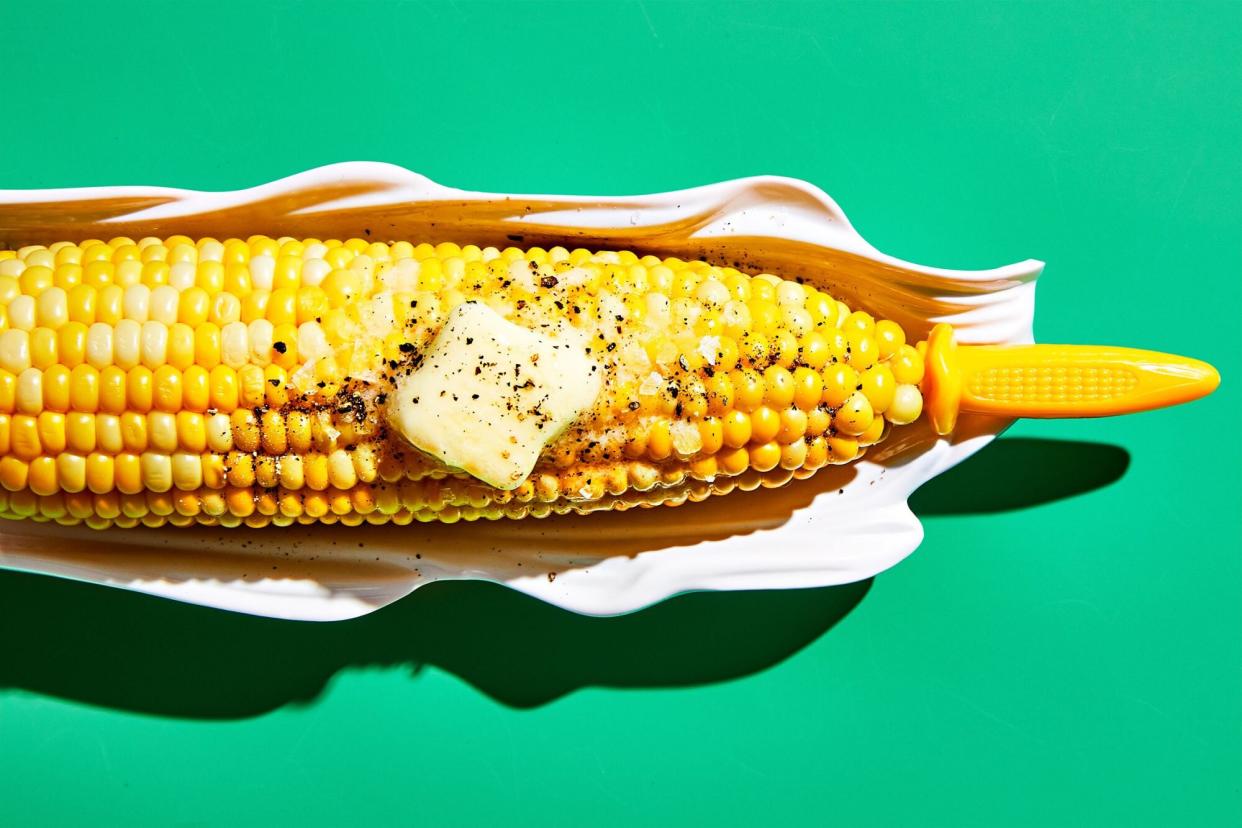The Surprising History of the Corn Cob Holder

Photo by Kelsey Hansen / Food Styling by Greg Luna / Prop Styling by Stephanie Hunter
A hot ear of corn can be hard to hold, made even more challenging when it's slippery with melted butter. Although humans have fared just fine using just their fingers to eat corn on the cob, history has seen a dizzying number of inventions that assist in the corn-eating experience.
One of the earliest patents for a corn-holding accessory was obtained in 1897 by Mary Donnelly, who invented the "Corn-Fork," which had a pacifier-shaped handle and three sharp prongs to stick into a cob.
A man named Carl Bomeisler patented a corn holder in 1909 that looked like a mini sword, with a blade to wedge into the corn and a handle engraved with kernels. In the 1950s, Bomeisler's design morphed into the corn holders that can still be seen at barbecues today—the yellow plastic ones that look like mini corn cobs, with two sharp prongs on the business end for sticking into the cob.
In 1977, Larry Riedinger and George Spector decided that the world needed an even better way to eat corn on the cob. The corn holders they'd come across required too much force to insert or fell out too easily, so the duo patented a new kind of corn holder in 1979: the cornscrew. As its name suggests, the cornscrew has a spiral just like a corkscrew, which winds into a corncob, providing maximum support with minimal effort. The cornscrew patent states that the invention intended to ease the process "so that it does not require a great force ... such as is difficult to apply by persons who do not have great strength, such as children, women or those who are older."
Cornscrews and corn holders only continued to pick up steam from there. One company, Michigan-based Lilly Industries, created a product called the Cob Nob that could be screwed into either side of a corn cob before cooking, cooling just seconds after being removed from the pot or microwave—which meant you never had to touch the hot corn at all. The history of corn cob holders is as varied as it is bizarre, but the upside is that there's a corn-ucopia of corny options to choose from.
Of course, if you really want to keep your fingers clean, the best solution is probably the one that copywriter and author Lillian Eichler Watson captured the core of corn-eating etiquette in her 1921 book, The Book of Etiquette, preferring, when all is said and done, to eat her corn off of its cob: "Corn on the cob is without a doubt one of the most difficult foods to eat gracefully ... It is entirely permissible to use the fingers in eating corn, holding it lightly at each end ... Many a foresighted hostess, when serving corn on the cob, provides each guest with a short, keen, steel-bladed knife with which the kernels may be cut from the cob easily. This is by far the most satisfactory method."
By The Numbers
36.25 inches: size of the world's largest corn cob ever grown, by Bernard Lavery in the U.K. in 1994
800: average number of kernels on an ear of corn
16: average number of rows on an ear of corn
20 to 25: number of miniature kernels per row on the standard two-pronged yellow plastic corn cob holders

